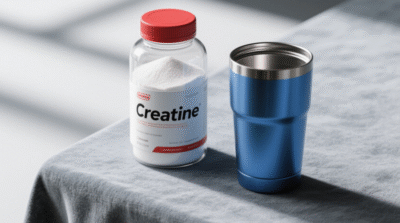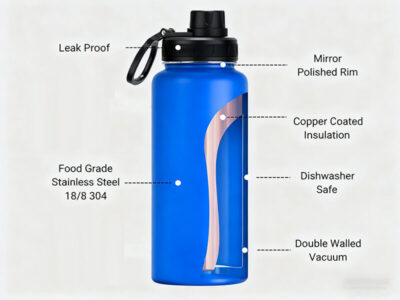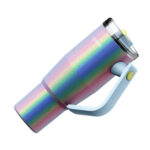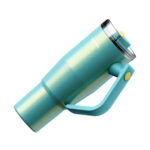Can You Microwave Stainless Steel Water Bottles?
“Never put metal in the microwave” — that’s what many of us were told growing up. But few of us knew exactly why. What makes microwaving metal, like a stainless steel water bottle, such a bad idea? And what actually happens if you do it?
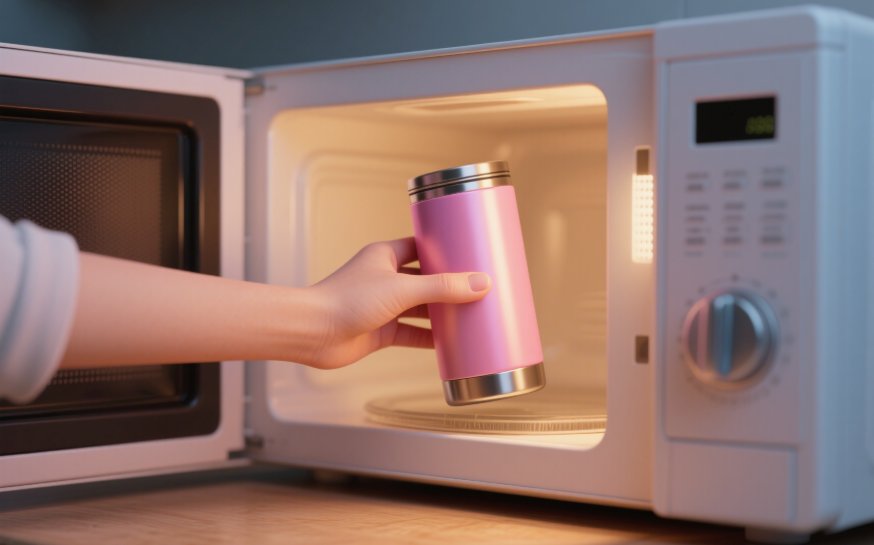
The truth is, microwaving stainless steel isn’t just ineffective — it can be dangerous. Sparks, damage to the microwave, and even fire hazards are all possible outcomes. Still, many people assume that because stainless steel is strong and heat-resistant, it should be microwave-safe. It’s not.
Understanding how metal interacts with microwave energy clears up the confusion — and might save your appliance. Whether you’re reheating coffee or looking for better ways to care for your stainless steel water bottle, knowing what not to do is just as important as knowing the best practices.
Table of Contents
ToggleWhat Happens When You Microwave Stainless Steel
Microwaves heat food by emitting electromagnetic waves that excite water molecules, generating heat from the inside out. This works well with materials like ceramic, glass, or certain plastics that allow these waves to pass through. But metal — including the stainless steel used in your water bottle — behaves very differently.
Stainless Steel Reflects Microwave Energy
Instead of absorbing microwave energy, stainless steel reflects it. This means the microwaves can bounce around erratically inside the oven. If your stainless steel bottle has a rounded shape or tight corners — as most do — these reflections can create concentrated electric charges at specific points.
That’s why sparks or “arcing” often occur when metal is placed in a microwave. It’s not just harmless flickering. These sparks can damage the microwave’s internal components or even start a fire in extreme cases.
The Consequences: Fire Hazards and Ruined Appliances
Beyond sparks, putting a stainless steel water bottle in the microwave defeats the purpose of using a microwave at all. The metal blocks the energy from reaching the liquid inside, so the contents remain cold while the appliance is under stress. In some cases, repeated exposure to this kind of misuse can ruin your microwave altogether.
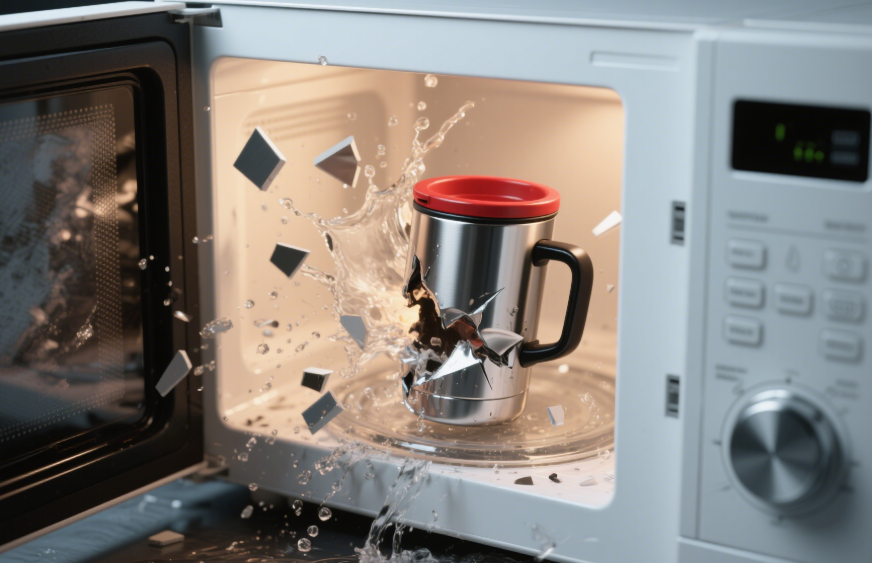
Even worse, sealed stainless steel bottles — especially vacuum-insulated ones — can build up internal pressure when exposed to uneven heating, creating a risk of the bottle bursting or exploding. This applies whether it’s a large thermos or a small stainless steel water bottle you use on the go.
For both personal safety and the longevity of your equipment, stainless steel should never go into the microwave. It’s a good idea to transfer your drink to a microwave-safe container first, then pour it back once heated.
Also, microwaving metal can make future cleaning more difficult by damaging protective coatings or inner linings. If you’re wondering how to clean a stainless steel water bottle effectively, skipping the microwave is step one.
For businesses buying stainless steel water bottles in bulk, understanding these safety basics is key. It helps you educate your customers, avoid product misuse, and maintain your brand’s reputation for safety and quality.
Can Any Metal Bottle Go in the Microwave?
It’s a fair question: if stainless steel water bottles can’t go in the microwave, what about others made of different metals or with different coatings? Unfortunately, the answer remains the same — no metal bottle is microwave-safe, regardless of its size, shape, or finish.
All Metal Bottles Are Unsafe for Microwaves
Whether it’s stainless steel, aluminum, or copper, metal reflects microwaves instead of absorbing them. This reflection causes uneven energy distribution, potentially damaging both the appliance and the bottle itself. In fact, even thin metal foils can cause sparks, so a full-sized metal water bottle is especially risky.
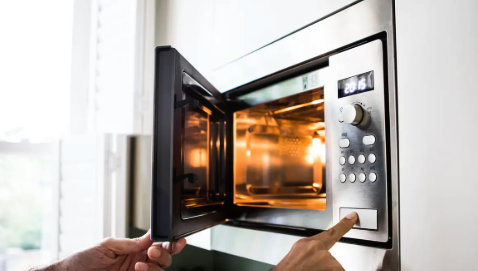
Some bottles may look microwave-safe because of a painted or powder-coated exterior, but these are only surface treatments. The core is still metal and will behave the same way under microwave radiation.
The Hidden Dangers in Vacuum-Insulated Bottles
Vacuum-insulated designs — which are common in both everyday and stainless steel water bottle bulk purchases for retail or corporate gifting — add another layer of risk. The airtight seal and double-wall construction are designed to trap heat. If microwaved, pressure can build up rapidly inside, leading to possible ruptures or leaks.
Better Alternatives and Cleaning Tips
Instead of using the microwave, pour your drink into a microwave-safe mug to warm it. After reheating, you can safely pour it back into your bottle for long-lasting insulation. This keeps both your microwave and your bottle in good condition.
And if you’re wondering how to clean stainless steel water bottle after daily use or storing different drinks, avoid harsh chemicals or heat exposure. Instead, use warm water, mild soap, and a bottle brush. For deeper cleaning, a mix of baking soda and vinegar can help remove odors and stains without damaging the stainless steel finish.
Understanding these basics is especially important when buying or selling water bottles in bulk. Whether you’re sourcing for retail, promotions, or corporate gifts, clear product safety guidelines can help your brand avoid liability and build customer trust.
Safety First — Just Don’t Microwave Metal
Mom’s advice still holds true: never put metal in the microwave. That includes your favorite stainless steel water bottle, no matter how durable or high-end it may be. The risks — sparks, damaged appliances, pressure build-up, and even fire — simply aren’t worth it.
If you need to reheat the drink inside your bottle, the safest method is to pour it into a microwave-safe cup, warm it up, and then return it to the bottle. This way, you preserve the insulation benefits of your bottle without putting yourself or your kitchen at risk.
So next time you’re in a rush and tempted to take a shortcut, remember: microwaves and metal don’t mix. Mom was right — again.





